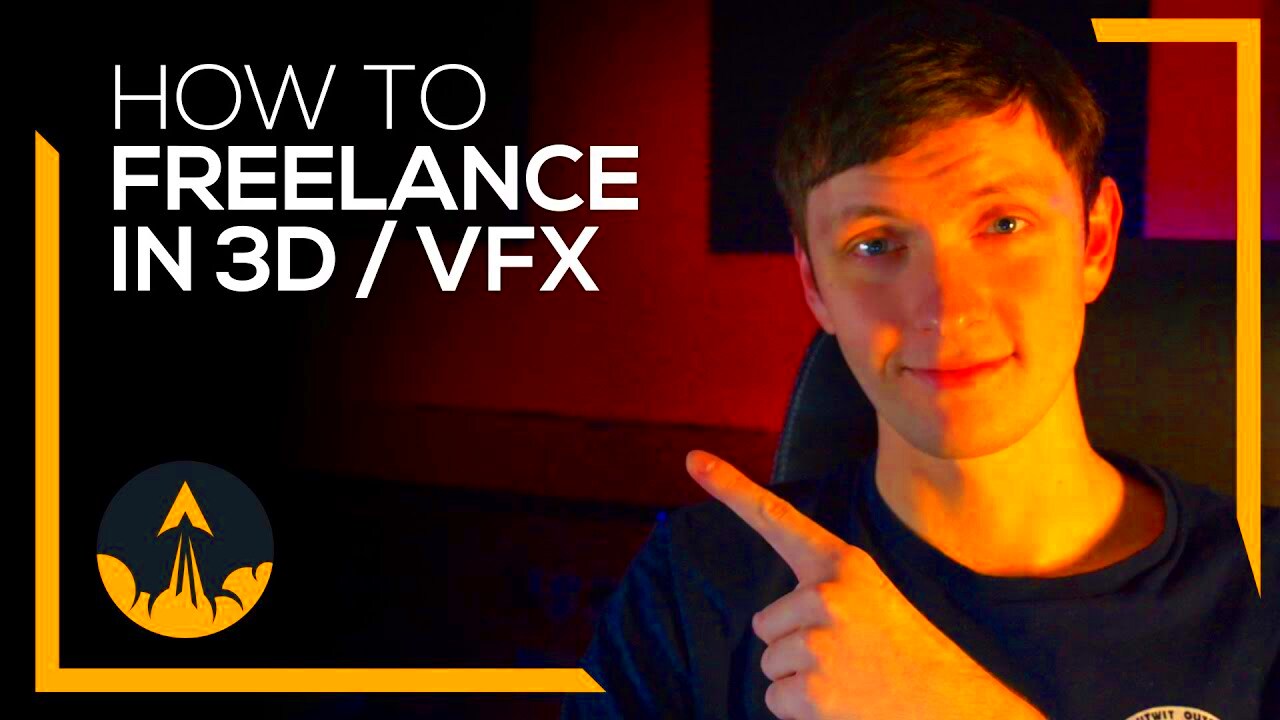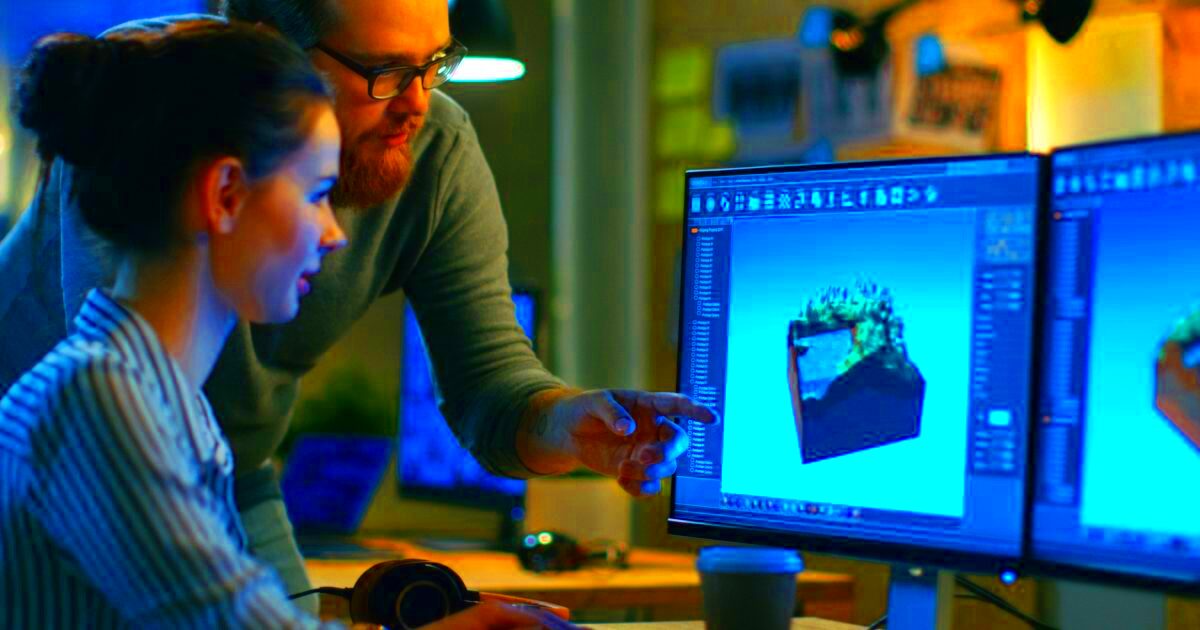Various industries from gaming and film to architecture and product design depend on freelance 3D artists. They create three-dimensional models and animations that bring ideas to life. This job is perfect for those who love creativity and technology. As a freelance 3D artist, you can work with multiple clients and projects, providing you with flexibility and a chance to showcase your unique style.
Following numerous functions of a freelance 3D artist are:
- Creating detailed 3D models based on client specifications.
- Developing textures and materials to enhance realism.
- Animating models for use in videos or games.
- Collaborating with clients to ensure their vision is met.
- Staying updated on industry trends and software.
Essential Skills Needed for Freelance 3D Artists

For one to become a successful freelance 3D artist, there are some skills he or she needs to possess. These not only aid in making beautiful images but also communicating effectively with customers. Below are a few of the top skills you would require:
- Proficiency in 3D Software: Familiarity with tools like Blender, Maya, or 3ds Max is crucial.
- Artistic Sense: A strong understanding of design principles, color theory, and composition is vital.
- Attention to Detail: Small details can make a big difference in 3D art. Focus on the finer aspects of your models.
- Time Management: Freelancers often juggle multiple projects, so being able to manage time effectively is key.
- Communication Skills: Clear communication helps in understanding client requirements and making necessary adjustments.
Also Read This: How to Get Pro Verified on Fiverr: Your Ultimate Guide
Building a Strong Portfolio to Attract Clients
As we all know, the key ingredient in succeeding as a freelancer 3D creator is a portfolio. It contains not only the best works but also shows the level of expertise for clients who may be considering hiring you. So what are some steps to creating an impressive collection?
- Select Your Best Work: Choose pieces that highlight your strengths and versatility.
- Diversity of Projects: Include a range of styles and types of work, such as characters, environments, and animations.
- Quality Over Quantity: It's better to have a few high-quality pieces than many mediocre ones.
- Update Regularly: Keep your portfolio current with your latest work to show growth and adaptation.
- Use Professional Presentation: Present your work in a clean, organized manner, using high-resolution images or videos.
You may want to think about including some descriptions to your pieces that would explain the objectives of the project and your contribution as well. This provides context for potential customers and reveals your cognitive steps.
Also Read This: What is an Illegal Character in Fiverr?
Choosing the Right Freelance Platforms for Your Services
Getting the right independent stage is key for relating with potential clients and exhibiting your work as a 3D artist. With many choices it may be difficult to know where to begin. The suitable platform can enable you reach out to your target market, handle projects well, and receive payments easily. Let’s look at some of the common freelancing platforms and things one should think about while selecting this type of site.
These are certain platforms worth considering:
- Fiverr: Great for offering specific services with set prices. Ideal for artists who have a clear product to offer.
- Upwork: A versatile platform that allows you to apply for jobs posted by clients. Suitable for various project types.
- Freelancer: Offers a wide range of projects but may require bidding for jobs, which can be competitive.
- ArtStation: Focused specifically on artists, making it an excellent place to showcase your portfolio and connect with industry professionals.
On the very factor of selecting a platform, here are important things to consider:
- Audience: Ensure the platform aligns with your target clients.
- Fees: Be aware of any fees associated with using the platform.
- Ease of Use: Look for a user-friendly interface that suits your workflow.
- Support: Check if the platform offers reliable support for freelancers.
Properly choosing the appropriate platform will boost your visibility and improve your chances of landing projects that match your skills.
Also Read This: What is Custom Asset Design in Fiverr?
Setting Competitive Prices for Your Work
In general, to a novice 3D artist, charging the right amount for services is of importance though it is not easy. You need to set prices that show your skill level and also the quality of your work while at the same time remaining competitive in the market. Below are some steps to help you determine proper pricing strategy:
- Research Market Rates: Look at what other freelance 3D artists charge for similar services. Platforms like Upwork and Fiverr can provide insight into standard rates.
- Consider Your Experience: If you’re just starting, you might want to set lower prices to attract clients. As you gain experience, gradually increase your rates.
- Evaluate Project Scope: Different projects require different levels of effort. Adjust your pricing based on the complexity and time required for each project.
- Offer Packages: Consider creating service packages (e.g., basic, standard, premium) that cater to different client needs and budgets.
You need to be very clear about your pricing with your clients. Going for transparency makes people trust you hence bringing them back for more services. Your pricing must be competitive but should not go down on the value of what you do because if they are too low then people will think that is what it all worth which is not good at all.
Also Read This: How to Register and Become a Certified Freelancer
Effective Marketing Strategies for Freelance 3D Artists
Promoting your services as an independent 3D artist is crucial when it comes to winning clients and expanding your business. There are ways to improve your visibility and market yourself better using suitable techniques. Here are marketing ideas that work:
- Social Media Presence: Use platforms like Instagram, LinkedIn, and Twitter to showcase your work, share updates, and connect with potential clients.
- Networking: Attend industry events, join online forums, and participate in community groups to build connections with other artists and clients.
- Content Creation: Start a blog or YouTube channel to share tips, tutorials, and insights about your creative process. This positions you as an expert in your field.
- Email Marketing: Build a mailing list to keep past clients and interested individuals updated on your latest work and offerings.
- Referral Programs: Encourage satisfied clients to refer others by offering discounts or incentives for new projects they bring to you.
Marketing thrives on consistency. To keep your clients glued to you, regularly refresh your online profiles and post new materials to your media sites as well as interact with the audience via messages or comments sections. Such efforts help to improve brand visibility which consequently leads to more customers of freelance work.
Also Read This: Understanding Design Concepts on Fiverr
Managing Client Relationships and Communication
Building strong client relationships is fundamental to freelancing, particularly in the case of 3D artists. Project success, repeat business and referral can be achieved through effective communication. It is very important to have well-defined expectations from the very beginning and keep an open line of communication during the entire project. Below are some important strategies for managing these relationships.
If you want to manage your clients well, these are some tips:
- Be Responsive: Reply to emails and messages promptly. Clients appreciate timely communication, which shows you value their time.
- Clarify Project Details: Ensure you fully understand the client’s vision and requirements. Ask questions and confirm details before starting.
- Set Boundaries: Establish working hours and stick to them. Let clients know when you are available to respond to queries.
- Provide Regular Updates: Keep clients in the loop with progress updates. This can be through scheduled check-ins or progress reports.
- Seek Feedback: Encourage client feedback throughout the project. It shows that you value their input and are willing to make adjustments.
At last, appreciation should be shown. A mere thankyou can work wonders in fostering a positive association. Often, strong client connections lead to continuous projects and recommendations hence it is worth spending time in this sector.
Also Read This: How Much Freelance Software Developers Typically Make
Common Challenges Faced by Freelance 3D Artists
Freelancing has its own challenges which also affect 3D artists. Recognising these shared obstacles could help you get ready and find the best answer. As a freelance 3D artist, there are some of the usual difficulties you may encounter:
- Inconsistent Income: Freelancers often deal with fluctuating income. It can be challenging to predict earnings, especially when starting out.
- Time Management: Balancing multiple projects and deadlines can be tricky. Effective time management is key to avoiding burnout.
- Client Expectations: Sometimes, clients may have unrealistic expectations. Clear communication about what is possible is essential.
- Isolation: Freelancing can be lonely, especially if you work from home. Finding a community or networking with other artists can help.
- Self-Promotion: Many artists struggle with marketing themselves. Finding effective ways to promote your work takes time and effort.
Daunting though these challenges may appear, they are not beyond our reach. With good habit development, practical goal setting and the right support system put in place, one can overcome such hurdles and prosper as a freelance 3D artist.
Also Read This: Why Am I Not Getting Jobs on Fiverr Anymore?
Frequently Asked Questions
If you are just starting out in the world of freelance 3D artistry, there may be a lot of questions that might be running through your mind. The following paragraphs would highlight some freelance 3D artist FAQs with their possible solutions:
- What software should I learn? It’s beneficial to be proficient in popular software like Blender, Maya, or Cinema 4D. The choice often depends on your specific interests, such as animation or modeling.
- How do I find clients? Start by utilizing freelance platforms, social media, and networking events. Building a strong online presence can also attract clients.
- What should I include in my portfolio? Showcase a variety of work that highlights your skills. Include personal projects, client work, and different styles to demonstrate your versatility.
- How do I handle difficult clients? Stay calm and professional. Listen to their concerns, clarify misunderstandings, and try to find a compromise that satisfies both parties.
- How do I stay motivated? Set clear goals, take breaks to avoid burnout, and engage with other creatives to keep the inspiration flowing.
In case you embark on the freelancing journey, then these frequently asked questions will serve as a guide throughout your worries. Remembering that it is common to have question and inquiring about them help with development process.
Conclusion
Becoming a freelance 3D artist is an exciting yet challenging journey to start. By understanding your role, refining important skills and efficiently managing the relationship with your clients, you lay a foundation for a successful freelance career. So pick the right platforms, charge competitive rates and effectively market yourself. There will be difficulties along the way but if you work hard and make changes when necessary, you can overcome them and shine in this field. Always stay true to what you love doing best; keep on improving yourself as an artist while at the same time developing strong bonds with both customers and fellow professionals. All these efforts will guarantee that at last your journey as a freelancer will be pleasurable looking back at it.




